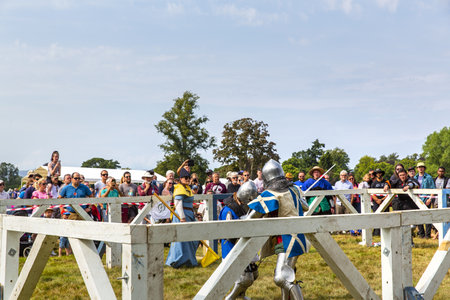Introduction to The Pilgrims’ Way
The Pilgrims’ Way is one of Britain’s most evocative ancient footpaths, weaving a route steeped in medieval history and spiritual resonance. Originating from Winchester in Hampshire and winding its way to the hallowed ruins of Canterbury Cathedral in Kent, this historic pathway traces the footsteps of countless pilgrims who journeyed in reverence towards the shrine of St Thomas Becket. The path itself predates Christianity, following older prehistoric trackways along the chalk ridges of southern England, but it was during the Middle Ages that The Pilgrims’ Way became indelibly linked with religious devotion and national identity. As a cultural artery, it connected not just two cities but entire communities, fostering trade, storytelling, and hospitality along its length. Today, The Pilgrims’ Way endures as a symbol of spiritual quest and self-discovery, inviting modern walkers to immerse themselves in the echoes of British heritage while treading a route shaped by faith, resilience, and centuries-old tradition.
2. The Route and Its Landmarks
The Pilgrims’ Way, a storied footpath winding through the heart of southern England, stretches from Winchester in Hampshire to the historic city of Canterbury in Kent. For those seeking to retrace the steps of medieval pilgrims, this route is both practical and evocative, offering a quintessentially English journey through rolling downs, chalk hills, ancient woodlands, and charming villages.
Key Sections of the Pilgrims’ Way
| Section | Distance (approx.) | Highlights |
|---|---|---|
| Winchester to Farnham | ~23 miles | St. Swithun’s Cathedral, Itchen Valley, Cheriton village |
| Farnham to Guildford | ~11 miles | North Downs Way overlap, Puttenham church, Hog’s Back Ridge |
| Guildford to Otford | ~38 miles | Pilgrims’ Chapel at Compton, Silent Pool, Box Hill views, Reigate castle ruins |
| Otford to Canterbury | ~55 miles | Kemsing village, Wrotham church, Charing Palace ruins, Chilham Castle, Canterbury Cathedral |
Notable Landmarks & Villages Along the Way
- St. Swithun’s Cathedral (Winchester): The traditional starting point for many pilgrims.
- Puttenham: A classic Surrey village with a Norman church and welcoming pubs.
- Pilgrims’ Chapel at Compton: A rare medieval chapel built specifically for wayfarers.
- Box Hill: An iconic vantage point with panoramic views of the Surrey countryside.
- Kemsing: A picturesque Kentish village with ties to early saints.
- Charing Palace:The ruins of an archbishop’s residence dating back to medieval times.
- Chilham:A beautifully preserved village with timbered houses and a Norman castle gatehouse.
- Canterbury Cathedral:The spiritual and symbolic end of the journey, where pilgrims paid homage at Thomas Becket’s shrine.
Countryside Features Unique to England
- Chalk Downs:The undulating North Downs provide gentle ascents and sweeping vistas characteristic of southern England.
- Beech Woodlands:Mature beech trees line sections of the route, especially near Guildford and Otford.
- Lanes & Hedgerows:Narrow country lanes bordered by ancient hedges are typical sights along much of the route.
- Coppiced Woods & Bluebell Glades:Traditional woodland management creates seasonal bluebell carpets in springtime—a distinctly British spectacle.
A Practical Note on Navigation and Amenities
The route is well-signed in parts but not continuous throughout; OS maps or GPS devices are highly recommended. Many villages offer welcoming pubs, tea rooms, and B&Bs catering to modern-day pilgrims keen on experiencing genuine English hospitality as they traverse this timeless path.

3. Medieval Pilgrimage: Rituals and Realities
Walking the Pilgrims’ Way today is not merely a journey through the Kentish countryside; it is an encounter with centuries-old traditions woven into England’s cultural fabric. For medieval travellers, this route to Canterbury was steeped in ritual and expectation, shaped by both religious devotion and practical necessity. The daily life of a pilgrim was far from romanticised legend—early risings, arduous foot journeys over muddy tracks, and communal prayers marked each stage. Along the way, pilgrims would pause at shrines, wayside crosses, or holy wells, performing acts of penance or leaving tokens of gratitude. These acts reflected deeply held beliefs about forgiveness, healing, and community.
The hardships were real: limited provisions meant reliance on the hospitality of monasteries or local villagers. Disease, highwaymen, and unpredictable weather posed constant threats. Yet camaraderie flourished; strangers became companions united by shared purpose. Many pilgrims wore badges—such as the scallop shell or St Thomas Becket’s symbol—proudly displayed as proof of their undertaking. Such tokens, still occasionally seen on modern walkers’ rucksacks, echo a tradition of visible belonging.
Some customs linger on the path today. The habit of greeting fellow walkers with a friendly “hello” or “good day” mirrors age-old exchanges between pilgrims. Wayside pubs and village churches continue to offer rest and reflection, much as they did for medieval travellers. Even the English penchant for tea breaks carries echoes of historic refreshment stops—albeit now with scones rather than stale bread! In retracing these ancient steps, modern ramblers find themselves connected not only to the physical landscape but also to enduring rituals that have shaped English identity across centuries.
4. Experiencing the English Countryside
Walking The Pilgrims’ Way is as much an immersion in the rural heart of England as it is a journey through history. The landscape is a living patchwork of fields, ancient hedgerows, and winding lanes that have shaped English identity for centuries. Each step brings with it a sensory encounter — the earthy scent after rain, the gentle rustle of leaves, and the distant call of wood pigeons. These are not simply backdrops; they are active participants in the pilgrim’s experience, framing every mile with a sense of timeless continuity.
The Sights and Sounds Along the Path
| Sensory Detail | Typical Encounter |
|---|---|
| Hedgerows | Bramble-laden, alive with birdsong and wildflowers |
| Village Greens | Cricket matches, picnicking families, grazing sheep |
| Country Lanes | Muddy boots, quietude broken by passing tractors |
The route regularly passes through or near small villages, where parish churches stand as both spiritual markers and community hubs. Many offer open doors to weary travellers — some even provide tea or a simple bench for reflection. Stepping inside these cool stone sanctuaries connects modern pilgrims to generations past who paused here with similar hopes and burdens.
Classic English Hospitality
Hospitality on The Pilgrims’ Way is rooted in tradition. Local pubs serve hearty meals and ale beside roaring fires, while bed-and-breakfasts welcome guests with pots of strong tea and homemade scones. It is not uncommon for strangers to strike up conversations over maps spread across pub tables or at waymarkers on misty mornings. This camaraderie is a cherished part of the journey, echoing the medieval custom of aiding those on pilgrimage.
Sample Offerings Along the Way
| Establishment | Typical Refreshments |
|---|---|
| Village Pubs | Ploughman’s lunch, Kentish cider, local cheese boards |
| B&Bs | Full English breakfast, home-baked goods |
| Church Stops | Cups of tea, quiet rest spots |
This authentic blend of natural beauty, gentle rhythms, and heartfelt hospitality transforms The Pilgrims’ Way from a simple walk into a deeply cultural experience — one that lingers long after the cathedral’s spires have faded from view.
5. Arriving at Canterbury: History Meets Present
The moment a traveller arrives in Canterbury, there is an unmistakable sense of arrival—one that transcends mere geography and touches on centuries of British tradition. The ruins and towering spires of Canterbury Cathedral, visible from a distance, have long served as a beacon for pilgrims and seekers alike. For medieval wayfarers, reaching this hallowed ground signified the fulfilment of vows and the hope for spiritual renewal. Today, while the cathedral stands both restored and partly ruined—a testament to history’s passage—the symbolism remains potent.
The End of the Pilgrimage: A Layered Symbolism
Stepping onto the ancient stones, visitors are enveloped by a palpable connection between past and present. The journey’s end in Canterbury mirrors the classic arc of British pilgrimage: not merely a destination but a rite of passage. Medieval pilgrims may have sought forgiveness or healing, but modern walkers often find something equally valuable—a renewed sense of identity, rooted in shared heritage and landscape.
Canterbury’s Influence on British Identity
Canterbury is more than a historical site; it is a living symbol woven into the fabric of British culture. From Chaucer’s tales to contemporary festivals, the city has become shorthand for spiritual quest and communal memory. The act of retracing the Pilgrims’ Way, whether for faith or curiosity, invites reflection on what it means to be part of this enduring narrative.
The Living Legacy
As visitors mingle among locals and fellow travellers within Canterbury’s precincts, they contribute to a tradition that continues to shape British identity. The juxtaposition of ancient ruins with vibrant city life speaks to Britain’s ability to embrace continuity and change—qualities that define both the Pilgrims’ Way and the nation itself.
6. Practical Tips for Modern Pilgrims
Wayfinding Along The Pilgrims’ Way
While the ancient route is steeped in history, today’s walkers benefit from a network of well-marked footpaths and bridleways. Ordnance Survey maps (Explorer 137 and 138) are invaluable companions, and many sections now bear discrete waymarkers featuring the scallop shell or signs for the North Downs Way, which often overlaps with The Pilgrims’ Way. A reliable GPS device or mapping app is also highly recommended, especially in areas where signage may be sparse or overgrown.
Respecting Local Customs and Traditions
Kentish villages along the route retain a sense of quiet hospitality. When passing through farmland, always close gates behind you and keep to designated paths to respect private property. A polite “Good morning” or “Afternoon” is customary when greeting locals or fellow walkers. Many small churches remain open during the day—feel free to step inside for a moment of reflection, but remember to remove muddy boots and keep noise to a minimum.
Seasonal Considerations
The route can be enjoyed year-round, though spring and early autumn offer the most forgiving weather and lush scenery. Be prepared for muddy stretches in winter and occasional overgrowth during summer. Layers are key; Kent’s weather is notoriously changeable, so pack waterproofs even if the forecast looks promising. In high summer, sun protection and ample water are essential as some sections are exposed.
Engaging with the Community
Pilgrimage is as much about people as places. Many villages host local fetes, farmers’ markets, or church teas—checking local noticeboards or parish websites ahead of your journey can lead to memorable encounters. Supporting independent shops, bakeries, and pubs along the way not only sustains rural economies but fosters genuine connections; don’t hesitate to ask for recommendations or share stories from the road.
Additional Pointers
Public transport links in Kent are generally good, allowing flexibility with start and end points—consider using trains to access main towns like Farnham or Canterbury. For those wishing to complete the journey in stages, there are numerous B&Bs and traditional inns catering specifically to walkers. Finally, while solo walking offers solitude, travelling with a companion can enhance both safety and enjoyment on this time-honoured path.


